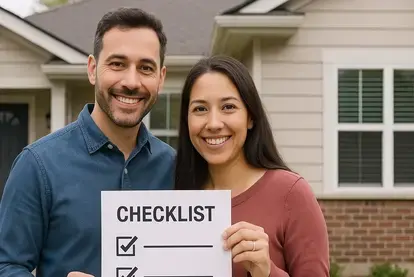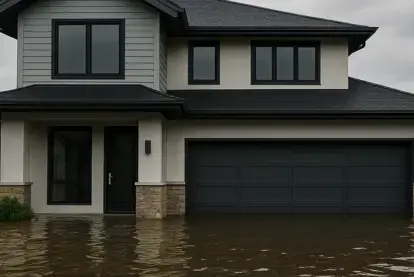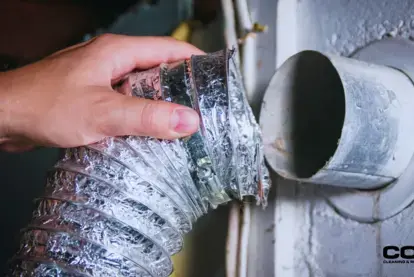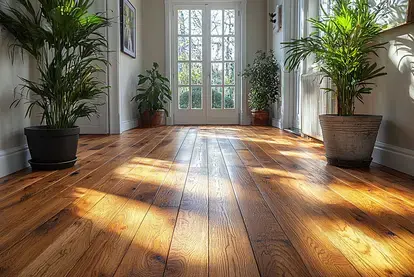
3 Easy Ways to Clean Your Hardwood Floors
Contact COIT for a professional cleaning!
Hardwood floors are one of the most beautiful and long-lasting features in a home, but only if you care for them properly.
From everyday dust to muddy pawprints, wood floors take on a lot, and knowing how to clean hardwood floors the right way keeps them gleaming for decades without dulling their finish or damaging the wood underneath.
At COIT, we’ve been cleaning and restoring hardwood floors for over 70 years. Here’s our complete guide to cleaning, maintaining, and protecting your wood floors, plus when to call in professionals for a deeper clean.
Step-by-Step: How to Clean Wood Floors
If you’re looking for a quick overview, this is the best way to clean hardwood floors safely and effectively.
Quick Answer:
To clean your wood floors, start by sweeping or vacuuming the floor with a soft brush, then mix a few drops of mild dish soap or a hardwood-specific cleaner in warm water. Dampen (not soak) a microfiber mop and clean with the grain. Rinse often, dry immediately with a towel, and let it air dry completely before walking on it.
Step 1: Sweep or Vacuum
Before using any cleaner, remove loose dust and grit that can scratch the surface.
- Use a soft-bristle broom or a vacuum with a hard floor or brush attachment.
- Avoid vacuums with beater bars or rotating brushes as they can leave fine scratches.
- Pay extra attention to corners, under furniture, and along baseboards.
Tip: For everyday upkeep, a cordless stick vacuum designed for hardwood floors makes the job easier and prevents over-cleaning with water.
Step 2: Choose the Right Cleaning Solution
Hardwood floors need a pH-neutral cleaner that won’t strip their finish or leave residue. You have two main options:
Cleaner Type | Best For | Avoid If | Notes |
Commercial hardwood cleaner (e.g., Bona, Murphy Oil Soap, Method Wood) | Sealed or polyurethane floors | None | Ready-to-use, residue-free |
Water + few drops of dish soap | Most sealed floors | Unsealed wood | Simple and safe DIY option |
¼ cup vinegar + 1 gallon water | Not recommended | Any wood floor | Acidic vinegar dulls finish over time |
Always test your cleaner on a hidden spot first. If your floor has a wax, shellac, or oil finish, skip water entirely and use a cleaner labeled specifically for that type of finish or a dry-cleaning method (see below).
Step 3: Damp Mop with a Microfiber Mop
Fill a bucket with your chosen solution and wring out your mop until it’s just damp. Too much moisture is the biggest threat to wood floors.
- Work in small sections (about 3x3 feet).
- Mop with the grain of the wood.
- Rinse your mop often and replace water as it gets cloudy.
- Immediately dry each section with a clean towel or dry mop.
Quick Tip: Never let any water pool on wood floors as it can seep into seams and cause boards to swell or cup.
Step 4: Dry and Buff
Once you’ve finished mopping, let the floor air dry completely. To prevent streaks or dull spots, lightly buff with a soft microfiber cloth or dry mop.
If your floor still looks cloudy after drying, you might have residue buildup from soaps or cleaners, so you should rinse it again with plain water and dry thoroughly.
Step 5: Protect and Maintain
- Add mats near doors and under sinks to catch dirt and drips.
- Use felt pads on furniture legs to prevent scratches.
- Avoid high heels or cleats on wood floors as they can dent softwood easily.
- Keep your pet’s nails trimmed and wipe their paws during wet seasons.
Re-polish or wax your floors every few months depending on traffic. A professional hardwood cleaning (like COIT’s deep cleaning service) can safely remove embedded grime, restore shine, and extend your floor’s lifespan.
How Often Should You Clean Hardwood Floors?
How often you clean depends on your lifestyle, but here’s a good rule of thumb:
Task | Frequency | Tools |
Dust or vacuum | Daily or every other day | Microfiber mop or soft-brush vacuum |
Damp mop | Weekly | Microfiber mop + mild cleaner |
Deep clean | Every 3–6 months | Professional cleaning service |
Polish or reseal | Every 1–2 years | Manufacturer-approved polish |
Skipping regular cleaning lets fine grit build up, dulling the surface and wearing down the finish faster.
Cleaning Based on Floor Type
Different types of hardwood finishes require slightly different care, so knowing what type you have prevents damage and helps make sure your cleaning products will work effectively.
Sealed (Polyurethane or Acrylic) Hardwood
These floors are water-resistant but not waterproof. Use a damp mop only, never wet.
- Safe with most commercial hardwood cleaners.
- Avoid wax or oil soaps, which can leave residue.
Unsealed or Waxed Hardwood
Never use water as moisture can penetrate and stain.
- Dust regularly with a dry mop or vacuum.
- Clean spots using a small amount of mineral spirits or specialty wood cleaner.
- Re-wax as needed to maintain protection and shine.
Engineered Hardwood
Engineered floors can handle more moisture than solid wood but still need care.
- Use a slightly damp mop and mild cleaner.
- Avoid harsh chemicals or steam mops, which can separate layers.
What Not to Use on Hardwood Floors
Even well-intentioned cleaning hacks can ruin wood over time. Avoid:
- Steam mops as moist heat seeps between boards, causing swelling.
- Vinegar or ammonia as they are too acidic, dulls the protective coating.
- Oil-based soaps as they leave a sticky residue that attracts dirt.
- Excess water as it causes warping, cupping, and long-term damage.
Stick with mild, pH-neutral products designed for hardwood floors.
Common Hardwood Floor Problems
1. Cloudy or Hazy Finish
A cloud or hazy finish on your hardwood floors is sually caused by product buildup.
Solution: Mop with warm water and a clean microfiber mop or use a residue-removing hardwood cleaner.
2. Sticky Floors
Sticky hardwood floors are usually caused by too much cleaner or soap.
Solution: Rinse with clean water only and buff dry.
3. Dull, Lifeless Floors
Dull and lifeless hardwood floors are often the result of wear or residue.
Solution: Use a hardwood polish recommended for your finish, or schedule a professional clean to re-seal and restore shine.
4. Water Spots or Stains
Act fast if you have water spots or stains on your hardwood floors as time is critical.
Solution: Blot with a soft towel, place a fan nearby to dry. For stubborn white rings, gently rub with a dab of baking soda paste or mineral oil, then buff dry.
DIY vs. Professional Hardwood Floor Cleaning
Even with the best care routine, dirt eventually settles deep into seams and micro-grooves where household tools can’t reach.
DIY Cleaning
Cleaning your hardwood floors yourself, DIY-style, is perfect for maintenance between professional visits. It helps keep your floors looking good and prevents surface buildup.
Professional Cleaning
COIT’s professional hardwood floor cleaning uses gentle, pH-balanced products and specialized buffing and extraction equipment that safely removes trapped dirt and residue without sanding or harsh chemicals.
When to call COIT:
- Your hardwood floors look dull or streaky no matter how much you clean
- There is a sticky film or residue that won’t go away
- Your wood floors have deep scratches or discoloration from wear
- It’s time for your annual deep clean or a move-in/move-out cleaning
We’ll restore your hardwood floor’s natural beauty and leave it spotless, protected, and ready to shine again.
Schedule Your Professional Wood Floor Cleaning and Disinfecting Today.
How to Keep Hardwood Floors Looking New
Maintenance is more than just cleaning, and there are a few preventive habits that can keep your wood floors in top shape:
- Keep your humidity between 35–55%. Too dry = cracking; too humid = swelling.
- Rotate your rugs and furniture to even out sun exposure.
- Sweep any high-traffic areas daily. Dirt acts like sandpaper underfoot.
- Clean up your spills immediately. Don’t let water sit.
- Recoat your hardwood floor every few years to refresh the finish and seal out moisture.
Hardwood Floor Do’s and Don’ts
Do | Don’t |
Use microfiber mops and soft bristles | Use rough pads or steel wool |
Mop with the grain | Mop against the grain |
Wring out mop until barely damp | Let water sit or air-pool |
Use pH-neutral cleaners | Use vinegar, bleach, or ammonia |
Buff dry for a streak-free shine | Skip drying (this causes streaks and dullness) |
FAQs About Cleaning Hardwood Floors
How do you clean hardwood floors without damaging them?
To clean your hardwood floors without damaging them, always use a damp, not wet, mop with a pH-neutral cleaner made for wood. Clean with the grain, rinse often, and dry immediately with a towel or microfiber cloth.
How often should you clean hardwood floors?
Dust your wood floors daily, mop them weekly, and deep clean every few months. High-traffic homes or pet owners might need more frequent upkeep.
Can I use vinegar to clean wood floors?
No, vinegar is too acidic for wood floors becuse it slowly dulls and etches the finish. Use a hardwood-safe cleaner or mild soap instead.
What is the best cleaner for hardwood floors?
Look for cleaners labeled for hardwood floors that are pH-neutral, like Bona, Method Wood, or Murphy Oil Soap. Avoid multi-surface sprays that contain harsh chemicals or oils.
Can I use a steam mop on wood floors?
You should avoid using a steam mop on wood floors. Steam drives moisture into cracks and seams, which can warp and discolor your wood over time.
Why does my hardwood floor look dull after mopping?
Residue from soap or hard water is likely the cause of dull hardwood floors after mopping. Rinse them again with plain warm water and dry thoroughly, or use a residue-removing cleaner.
What’s the easiest way to keep hardwood floors shiny?
Regular cleaning and occasional polishing is the easiest way to keep your hardwood floors shiny. Use doormats, avoid dragging furniture, and schedule annual professional maintenance.
When to Call COIT for a Professional Hardwood Floor Cleaning
Even the best DIY routine can’t match professional results. COIT’s certified technicians use industry-approved cleaning systems that gently lift dirt from deep within wood grain, restore color, and reapply protective finishes.
Whether your floors are dull, sticky, or scratched, our team can help you:
- Deep clean sealed or unsealed hardwood safely
- Remove grime, residue, and built-up polish
- Restore natural shine without sanding
- Protect against moisture and daily wear
We’ve been trusted in homes and businesses across the U.S. and Canada for over 70 years. Let us bring out the best in your floors.
Schedule Your Professional Wood Floor Cleaning and Disinfecting Today.
Knowing how to clean your wood floors properly is one of the simplest ways to protect your investment. With regular sweeping, gentle cleaning solutions, and occasional professional care, you can keep your hardwood floors glowing for decades.
And when you’re ready for a deeper refresh or full restoration, COIT’s hardwood floor cleaning services are here to help. Our team combines experience, precision, and professional-grade tools to give your floors the shine they deserve.
Bring back the natural beauty of your hardwood floors and request a free hardwood floor cleaning quote from COIT today. Contact COIT today.



